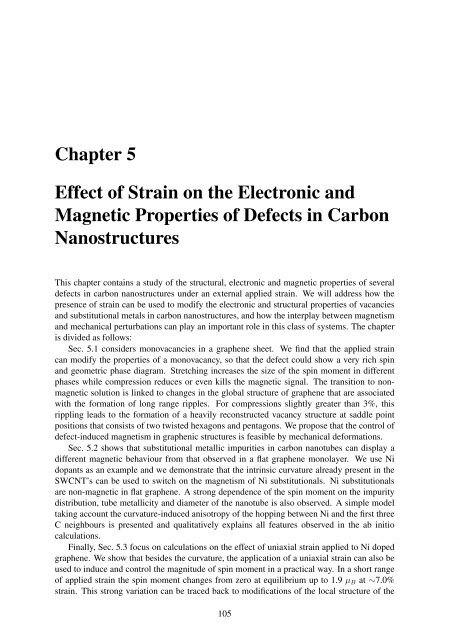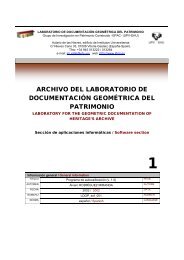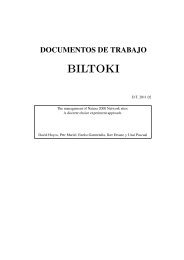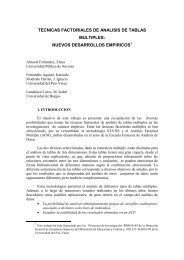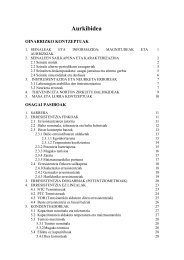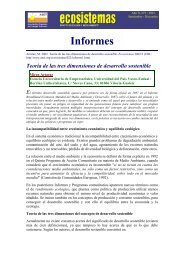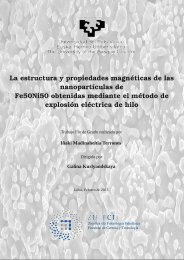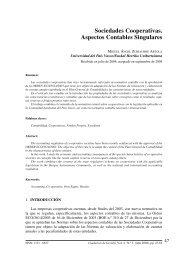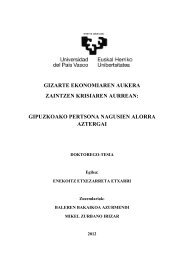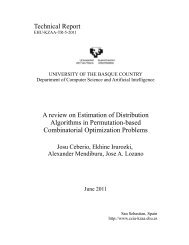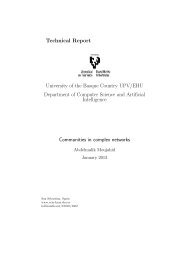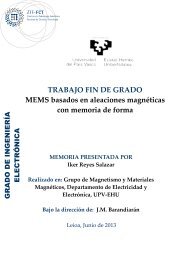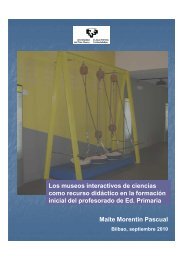Ï - ADDI
Ï - ADDI
Ï - ADDI
- No tags were found...
Create successful ePaper yourself
Turn your PDF publications into a flip-book with our unique Google optimized e-Paper software.
Chapter 5Effect of Strain on the Electronic andMagnetic Properties of Defects in CarbonNanostructuresThis chapter contains a study of the structural, electronic and magnetic properties of severaldefects in carbon nanostructures under an external applied strain. We will address how thepresence of strain can be used to modify the electronic and structural properties of vacanciesand substitutional metals in carbon nanostructures, and how the interplay between magnetismand mechanical perturbations can play an important role in this class of systems. The chapteris divided as follows:Sec. 5.1 considers monovacancies in a graphene sheet. We find that the applied straincan modify the properties of a monovacancy, so that the defect could show a very rich spinand geometric phase diagram. Stretching increases the size of the spin moment in differentphases while compression reduces or even kills the magnetic signal. The transition to nonmagneticsolution is linked to changes in the global structure of graphene that are associatedwith the formation of long range ripples. For compressions slightly greater than 3%, thisrippling leads to the formation of a heavily reconstructed vacancy structure at saddle pointpositions that consists of two twisted hexagons and pentagons. We propose that the control ofdefect-induced magnetism in graphenic structures is feasible by mechanical deformations.Sec. 5.2 shows that substitutional metallic impurities in carbon nanotubes can display adifferent magnetic behaviour from that observed in a flat graphene monolayer. We use Nidopants as an example and we demonstrate that the intrinsic curvature already present in theSWCNT’s can be used to switch on the magnetism of Ni substitutionals. Ni substitutionalsare non-magnetic in flat graphene. A strong dependence of the spin moment on the impuritydistribution, tube metallicity and diameter of the nanotube is also observed. A simple modeltaking account the curvature-induced anisotropy of the hopping between Ni and the first threeC neighbours is presented and qualitatively explains all features observed in the ab initiocalculations.Finally, Sec. 5.3 focus on calculations on the effect of uniaxial strain applied to Ni dopedgraphene. We show that besides the curvature, the application of a uniaxial strain can also beused to induce and control the magnitude of spin moment in a practical way. In a short rangeof applied strain the spin moment changes from zero at equilibrium up to 1.9 µ B at ∼7.0%strain. This strong variation can be traced back to modifications of the local structure of the105


